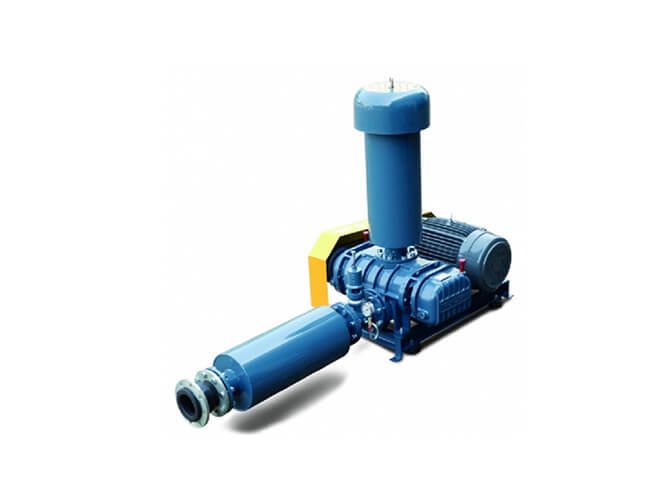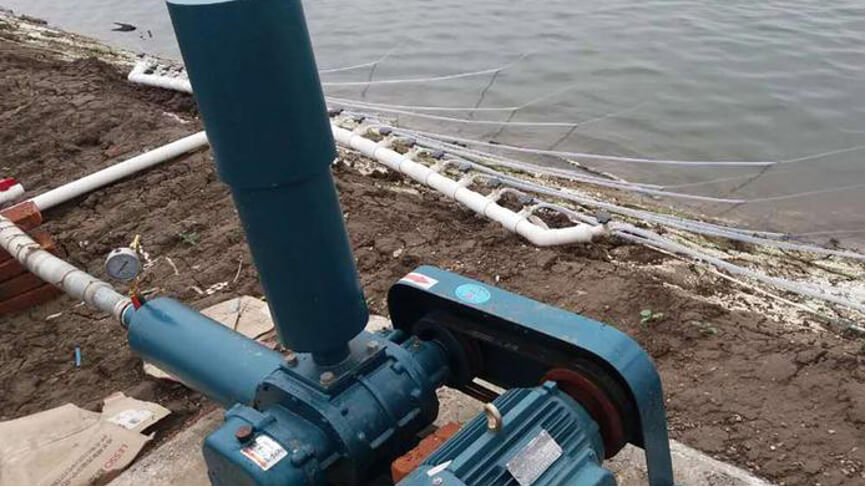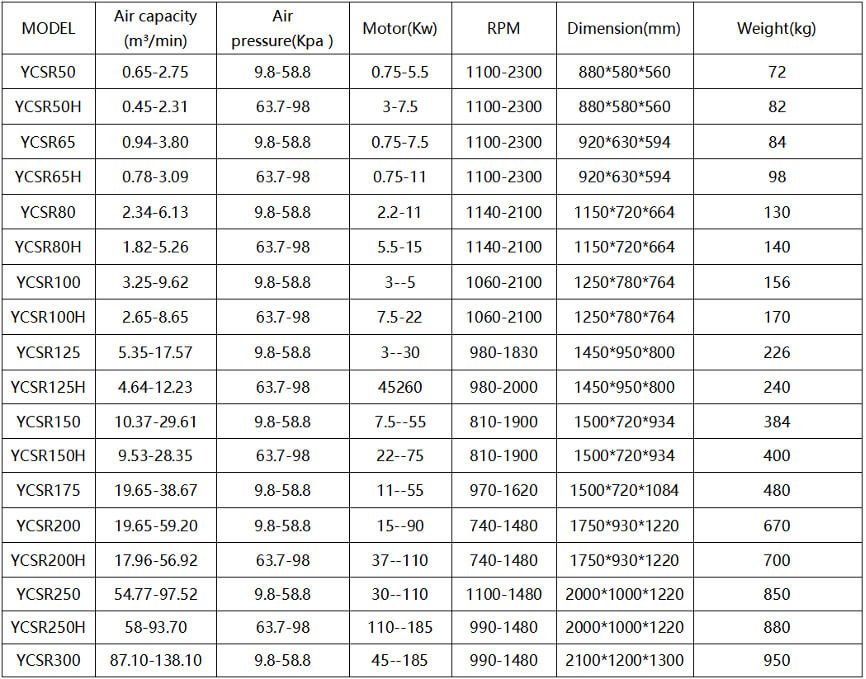Product
Blower used in wastewater treatment industry
The Roots blower used in the sewage treatment industry is a key piece of equipment designed specifically for sewage treatment plants. It is mainly used in aeration tanks to provide sufficient oxygen to sewage to promote the process of microbial decomposition of organic pollutants. This type of blower needs to have efficient and stable performance and be able to operate reliably for a long time in humid and corrosive environments. They are essential to ensure effective wastewater treatment and improve water quality standards. 
Principle
The working principle of the Roots blower used in the sewage treatment industry is to use two three-bladed rotors that do not contact each other but rotate synchronously to form a series of sealed working volumes in the cylinder. As the rotor rotates, these volumes in turn suck in air from the air inlet, compress it in a closed space, and then discharge it from the exhaust port and transport it to the bottom of the aeration tank through the piping system. 
Parameter
Single fuel tank: YCSR-(50/65/80/100/125/150/175/200/250/300)
High-pressure double fuel tank: YCSR-(80/100/125/150/200/250/300)H
Intensive: YCSR-MJ(50/65/80/100/125/150/175/200/250)
Roots vacuum pump: YCSR-(80/100/125/150/200/250/300)V 
Features and Advantages
Excellent corrosion resistance: Made of corrosion-resistant materials, ensuring excellent sealing even when handling corrosive gases.
High efficiency and energy saving: Despite the addition of protective measures, through optimized design, the Roots blower for sewage treatment still maintains high volume utilization and volume efficiency, which can reduce energy consumption while ensuring performance.
Low noise: Due to the use of three-blade rotor design and advanced sealing technology, the vibration and noise generated during operation are low.
No internal lubrication required: There are no friction parts inside, so there is no need to use lubricating oil, which reduces maintenance costs and avoids the risk of oil contamination.Long life: High-quality seals can maintain a good sealing state for a long time, extending the service life of the entire equipment.
Cleaning process: Ideal for applications that require the delivery of clean, oil-free compressed air or other gases, such as fine aeration in advanced wastewater treatment.
Compact structure: The overall design is compact, easy to install and arrange, while reducing the floor space.Easy to maintain: Although the sealing system is relatively complex, due to its high reliability and durability, actual maintenance requirements are less. Daily maintenance mainly includes checking the status of the seals and replacing worn parts. Usage Scenarios
Roots blowers used in the sewage treatment industry play an important role in many fields because of their unique performance characteristics. They are especially suitable for the following application scenarios: Aeration tank oxygenation: This is one of the most common applications in wastewater treatment. By supplying sufficient oxygen to the bottom of the aeration tank, aerobic microorganisms are promoted to decompose organic pollutants and accelerate the purification process. It is especially indispensable in traditional sewage treatment processes such as activated sludge method and biofilm method.
Oxidation ditch aeration: used in oxidation ditch systems to help maintain appropriate dissolved oxygen concentration, support metabolic activities of microorganisms, and improve treatment efficiency.
SBR (Sequencing Batch Activated Sludge Reactor) aeration: Provides necessary oxygen supply at different stages of the SBR process to ensure consistent treatment results in each cycle.MBR (membrane bioreactor) aeration: Provides precisely controlled aeration conditions for membrane bioreactors to prevent membrane surface clogging and maintain efficient solid-liquid separation.
Advanced treatment of wastewater: Participate in aeration tasks in the advanced treatment stage of wastewater, such as nitrification and denitrification reactions, to further remove ammonia nitrogen, total nitrogen and other pollutants.
Industrial wastewater treatment: Suitable for various industrial wastewater treatment facilities, such as chemical, pharmaceutical, food processing and other industries, to ensure that emissions comply with strict environmental standards.
Other applications: including but not limited to various gas treatment tasks in the fields of constructed wetland aeration, landscape water body maintenance, etc. 
